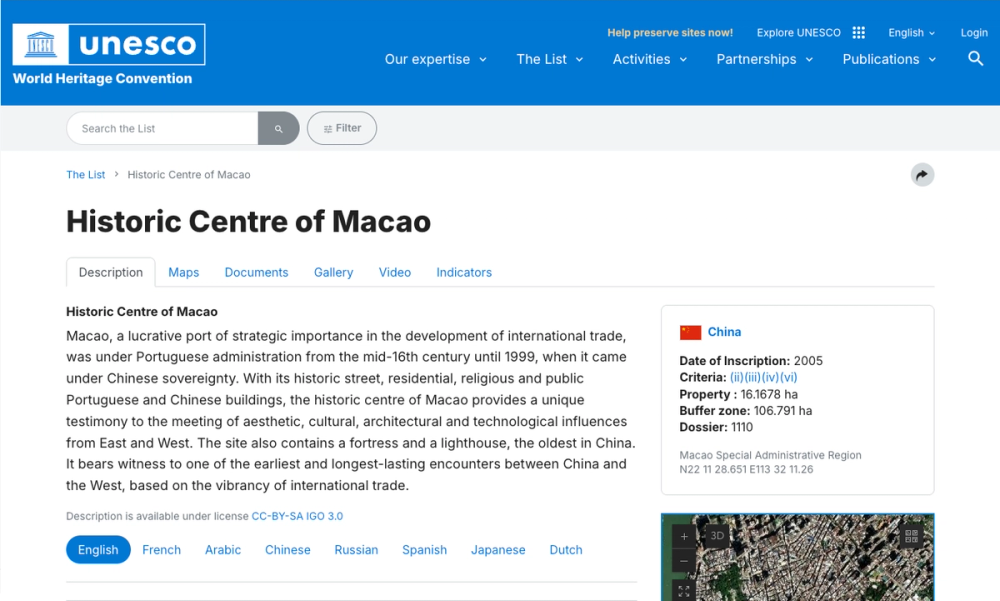Historical & Cultural Significance
Designated a UNESCO World Heritage Site in 2005, the Historic Centre of Macao represents the earliest and longest-lasting encounter between China and the West. Established in the mid-16th century as a Portuguese trading port, it became a gateway for cultural, religious, and architectural exchange.
Architectural Highlights
-
Western Landmarks:
- Ruins of St. Paul's: Facade of a 17th-century Jesuit church, once the largest Catholic complex in Asia.
- Senado Square: Baroque-style civic square with wave-patterned cobblestones.
- Guia Fortress: 17th-century military fort with a lighthouse and chapel featuring Chinese-style frescoes.
-
Chinese Heritage:
- A-Ma Temple (1488): Dedicated to the sea goddess Mazu, inspiring Macau's name.
- Mandarin’s House: Qing-era residence blending Chinese courtyard design with Western elements.
-
Fusion Examples:
- St. Dominic’s Church: Yellow Baroque church with Chinese ceramic roof tiles.
- Lou Kau Mansion: Chinese merchant’s home with neoclassical influences.
Visitor Experience
- Walking Routes: Explore interconnected squares like Lilau Square (Portuguese settlers’ first neighborhood) and St. Augustine’s Square.
- Cultural Events: Annual Macao International Music Festival at St. Joseph’s Seminary.
- Access: Free entry; central location on Macao Peninsula (buses 3, 6, 26).
Preservation & Global Recognition
The site’s "East-meets-West" urban fabric is protected under UNESCO’s criteria for:
- Architectural Diversity: Oldest Western-style buildings in China.
- Living Heritage: Active temples, churches, and festivals.
A testament to cultural pluralism, the Historic Centre remains a vibrant symbol of Macau’s unique identity.




